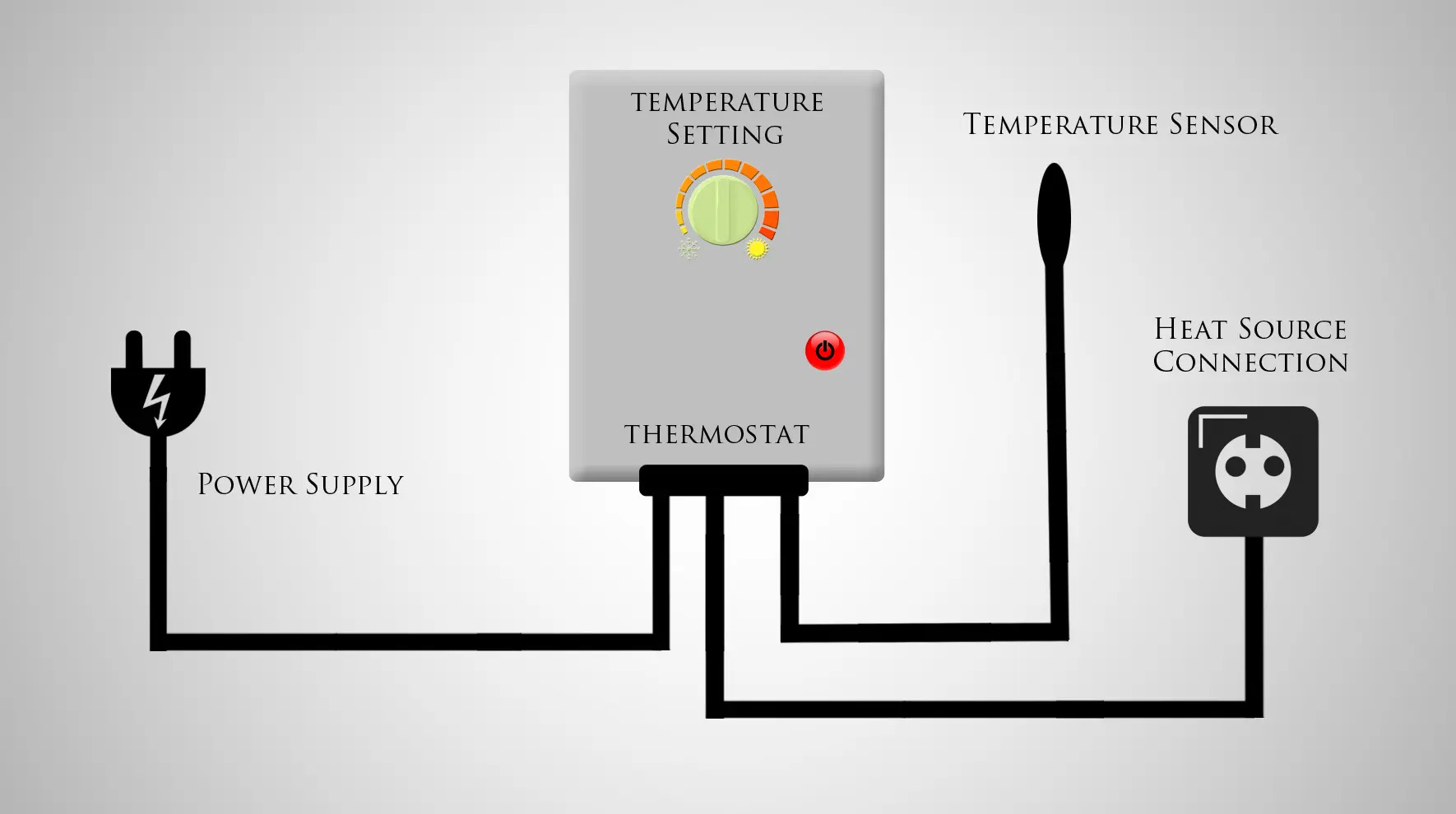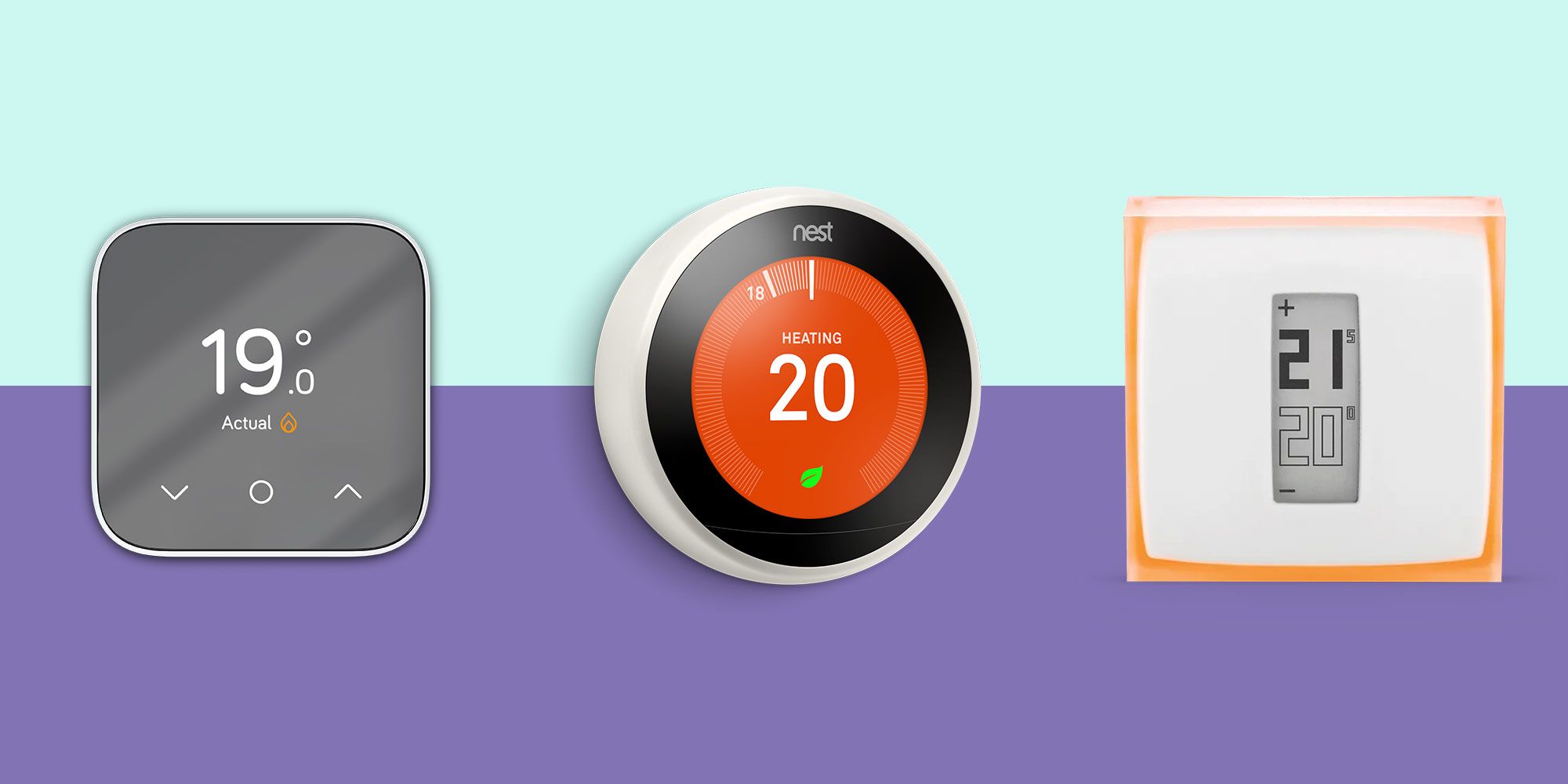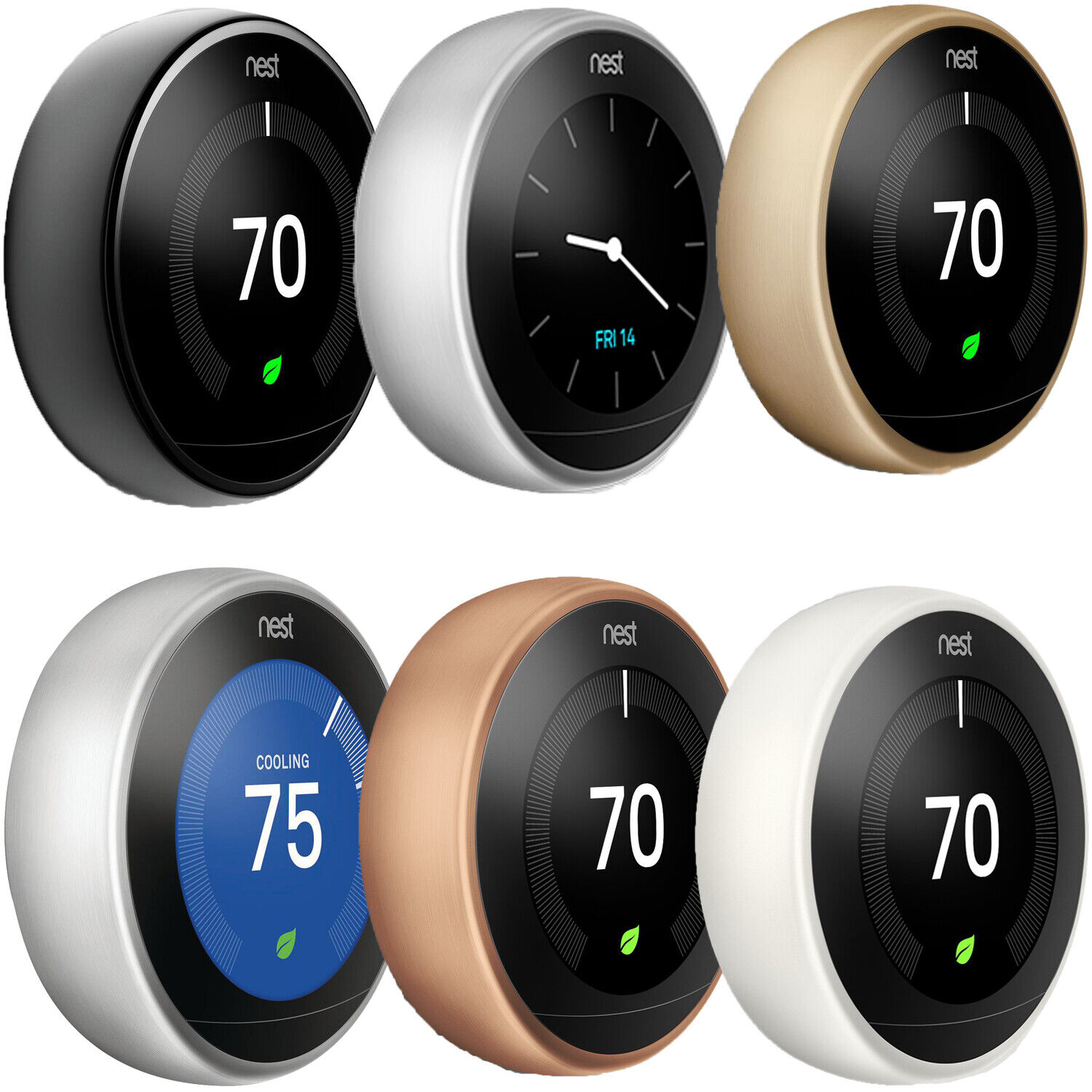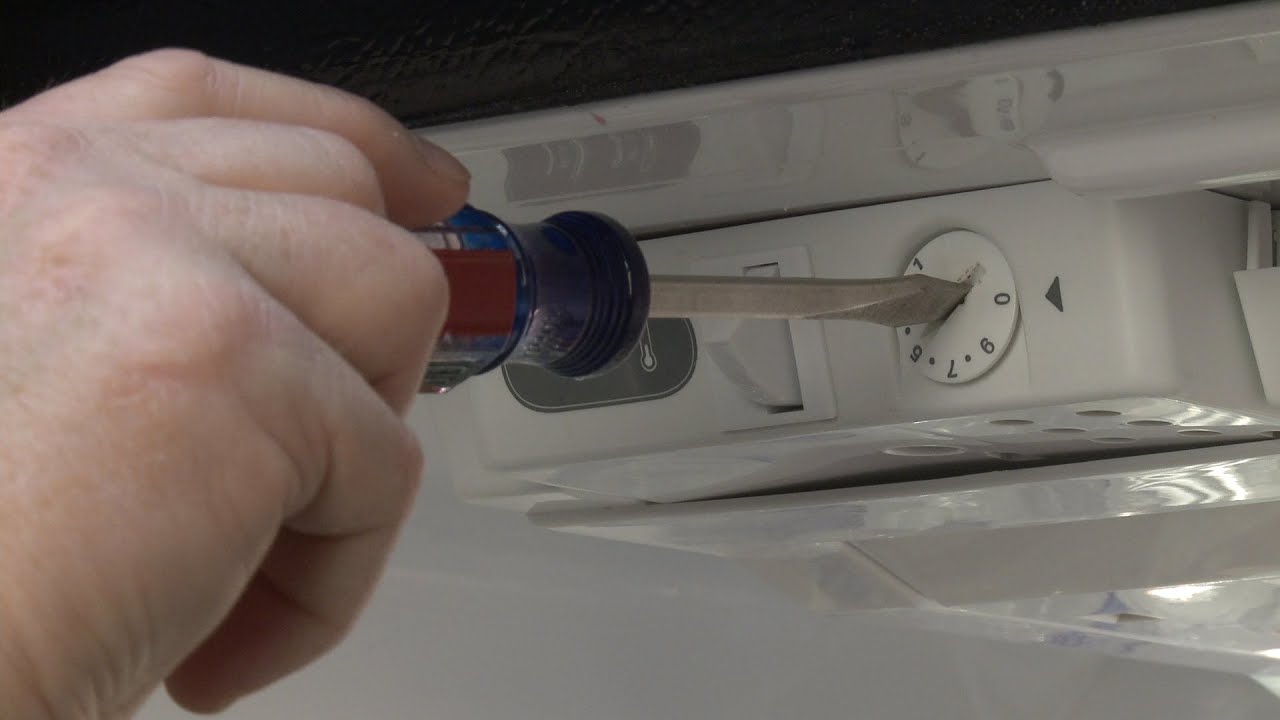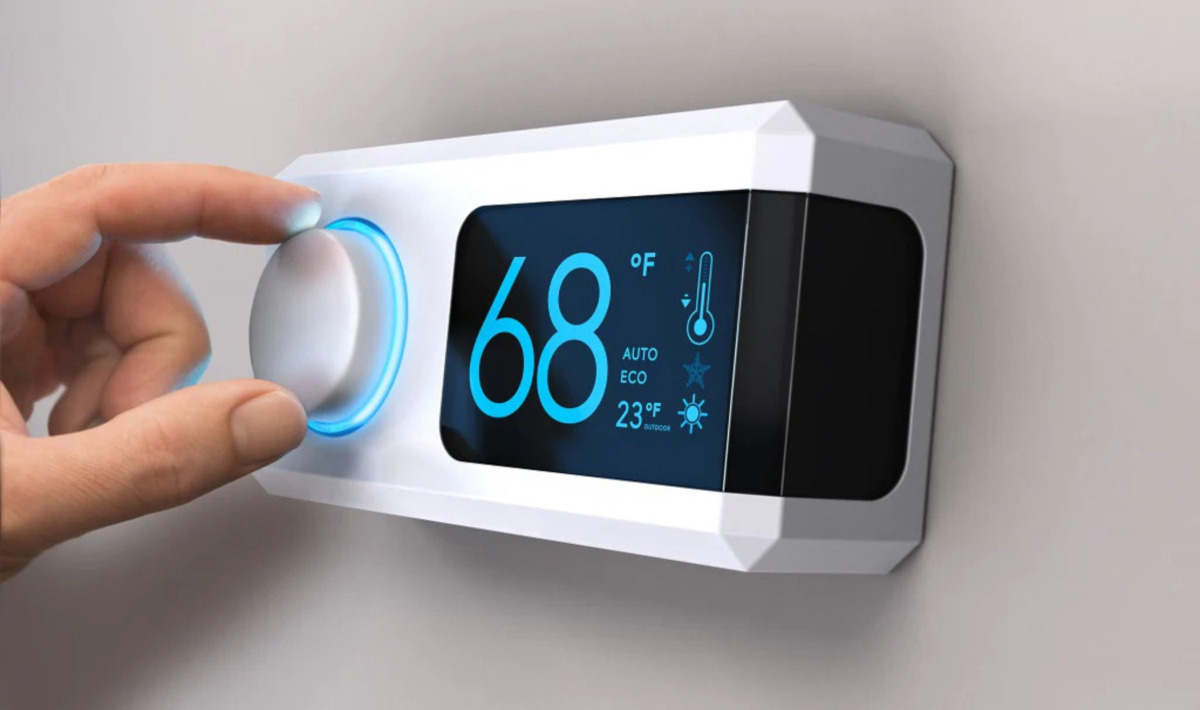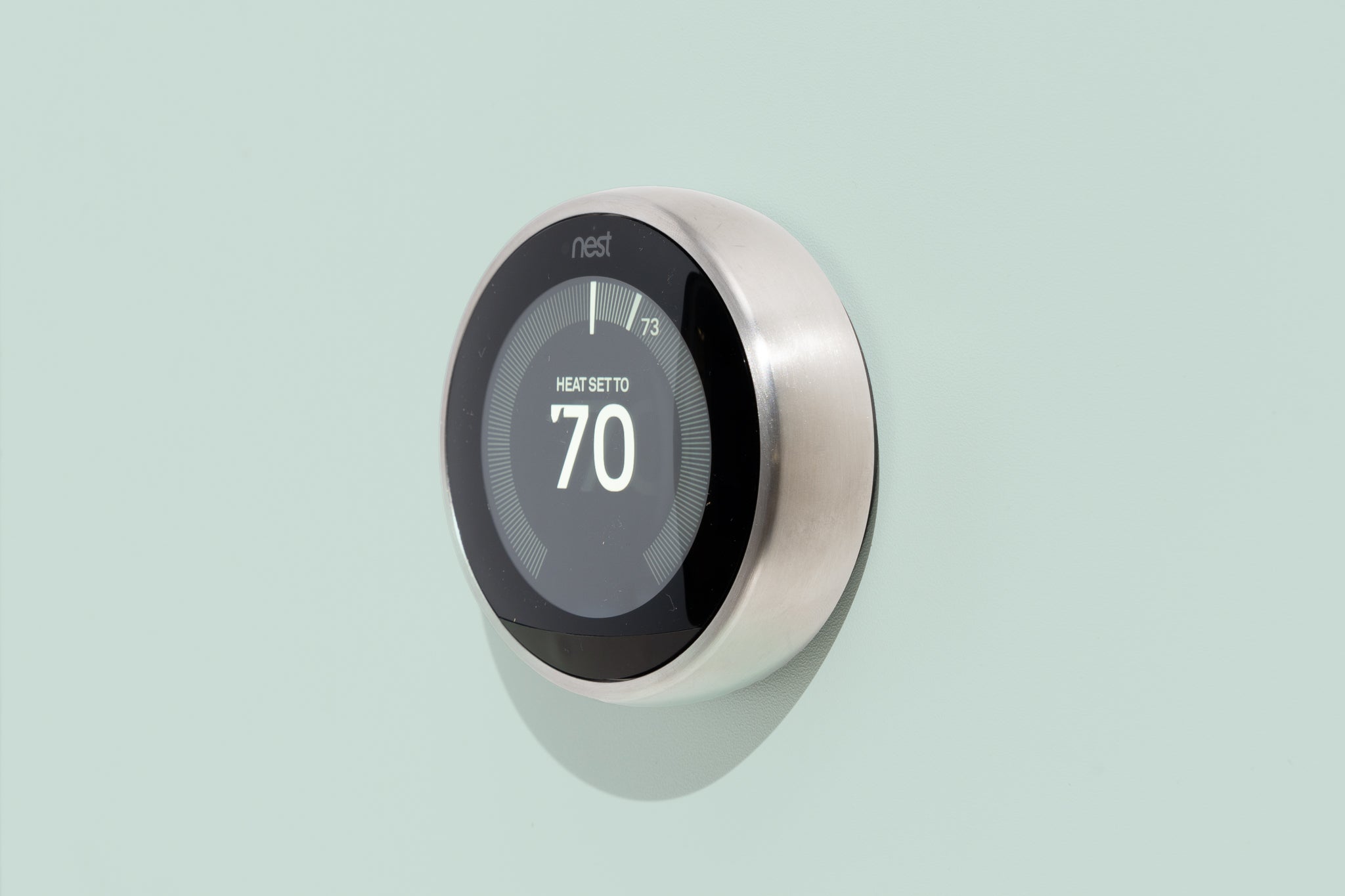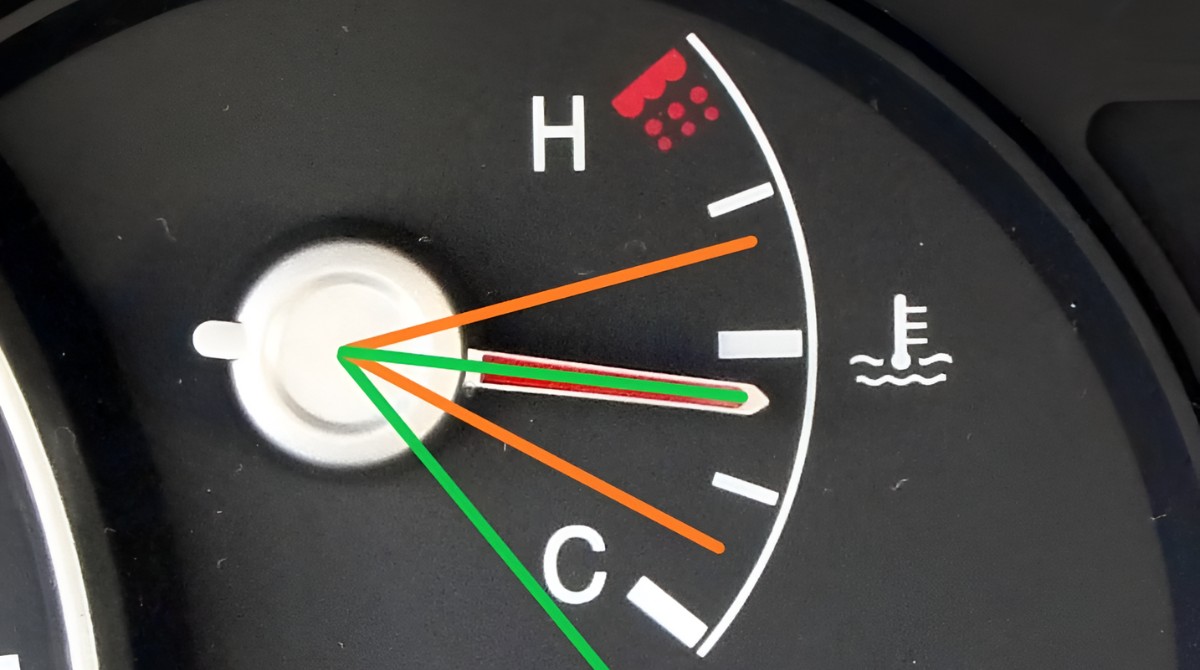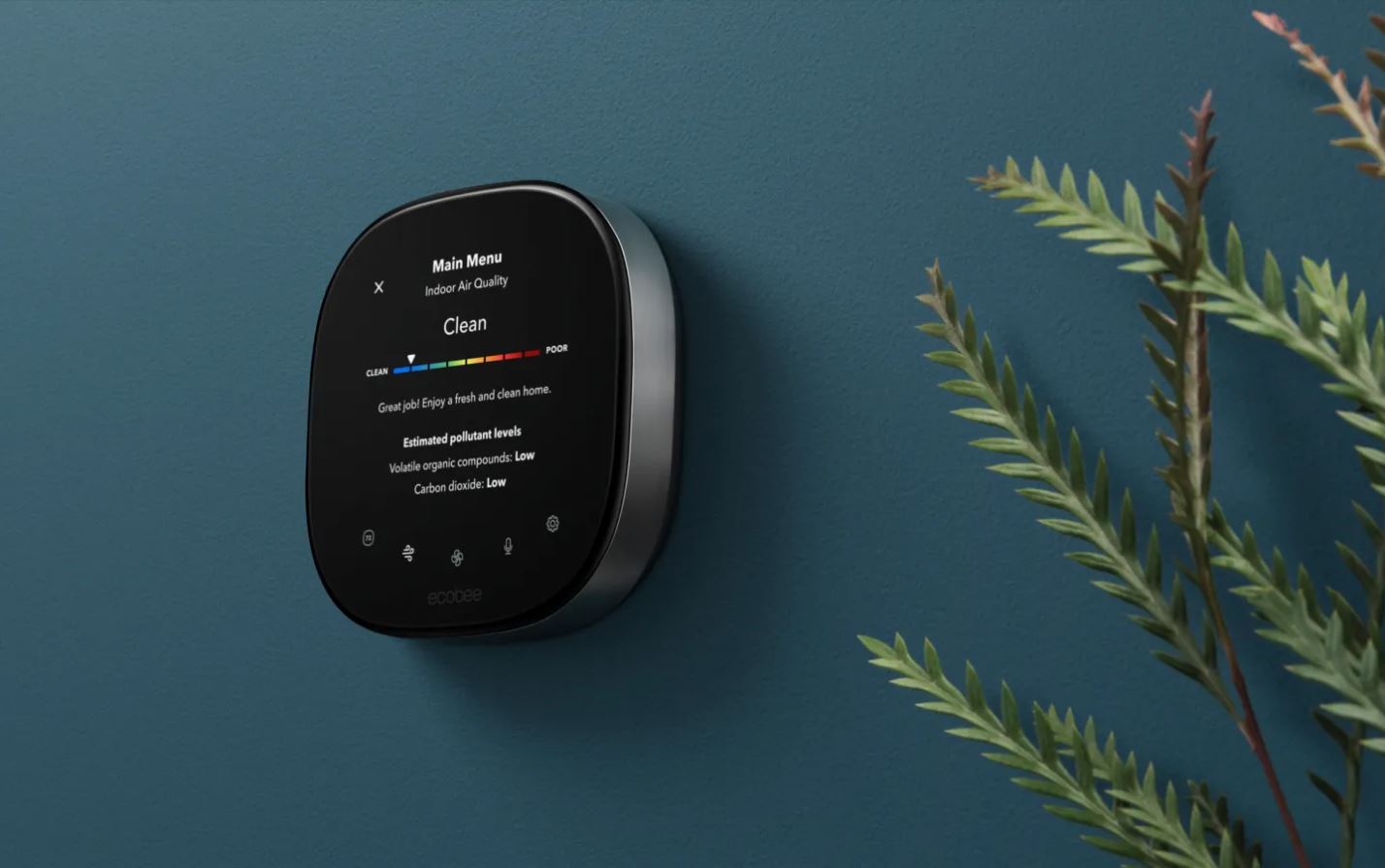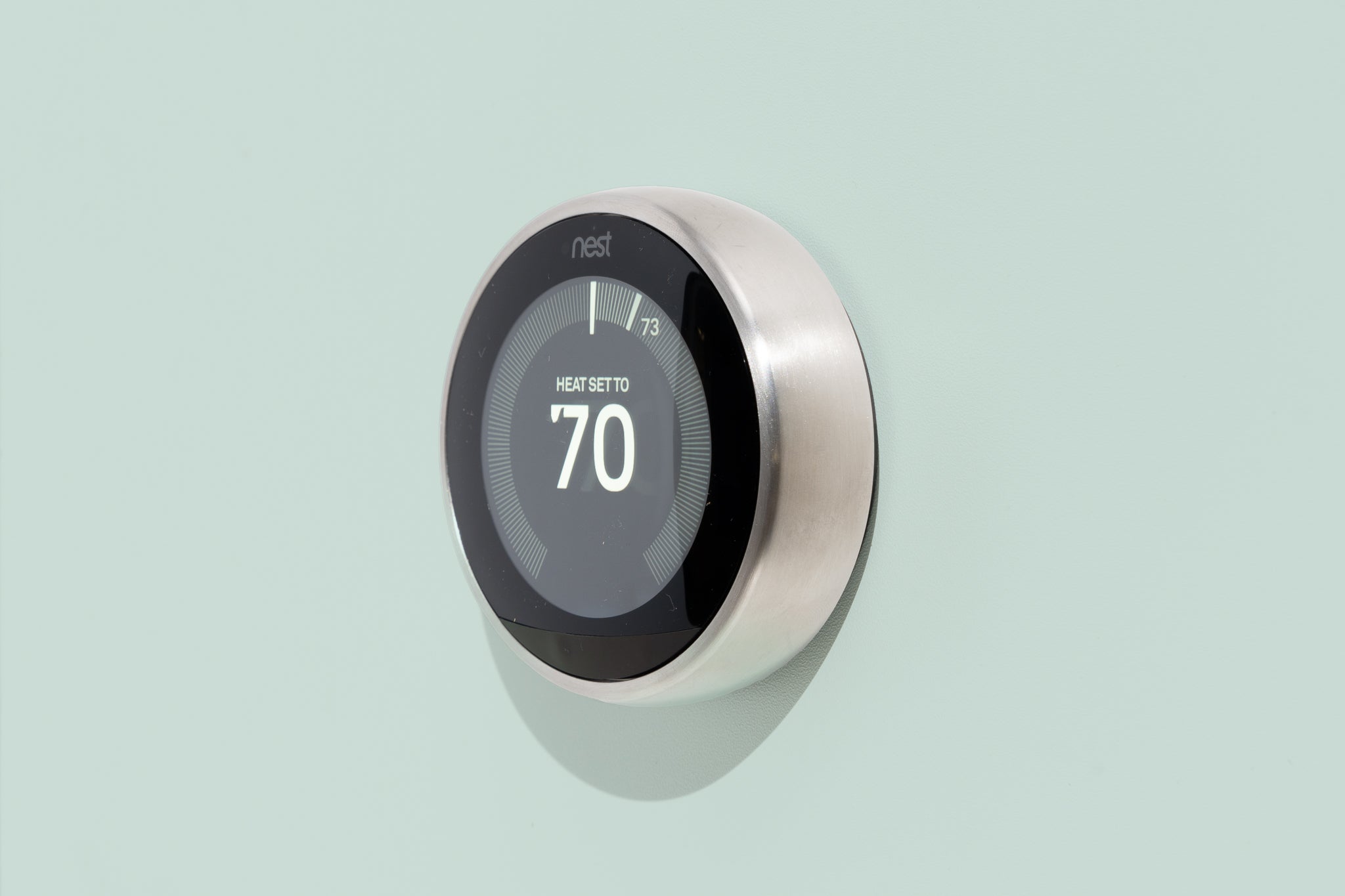Introduction
Thermostats are an essential component of modern heating and cooling systems, allowing us to regulate the temperature in our homes or offices to maintain comfort and energy efficiency. Whether it’s adjusting the heat on a cold winter night or keeping cool during a scorching summer day, thermostats play a crucial role in our daily lives.
A thermostat is a device that measures and controls the temperature of a specific area or system. It acts as a sensory organ, detecting changes in temperature and sending signals to the heating or cooling system to maintain the desired temperature. While the concept of thermostats has been around for centuries, technological advancements have led to the development of more accurate and efficient digital thermostats.
Understanding how thermostats work is essential for homeowners and professionals alike. By gaining insight into the inner workings of these devices, we can better utilize them to save energy, reduce costs, and optimize our comfort levels. In this article, we will explore the different types of thermostats, how they detect temperature, how they control heating and cooling systems, and common problems you may encounter with thermostats.
Whether you are considering installing a new thermostat or troubleshooting issues with your current one, this article will provide you with the knowledge and understanding you need to make informed decisions and maintain a comfortable living environment.
What is a thermostat?
A thermostat is a device that monitors and controls the temperature in a specific area or system, such as a room, building, or HVAC (heating, ventilation, and air conditioning) system. It is essentially a sensory organ that detects changes in temperature and signals the heating or cooling system to maintain the desired temperature.
At its core, a thermostat consists of a temperature sensor, a controller, and an output. The temperature sensor measures the current temperature in the area and relays the information to the controller. The controller then compares the actual temperature to the desired temperature set by the user and determines whether the system needs to heat or cool to reach the desired temperature. Finally, the output activates the heating or cooling system accordingly.
Thermostats can be classified into two main types: mechanical thermostats and digital thermostats. Mechanical thermostats use a bimetallic strip that expands or contracts based on temperature changes. As the strip moves, it triggers a mechanical switch that turns the heating or cooling system on or off. These thermostats are simple in design and are often found in older systems.
On the other hand, digital thermostats utilize electronic components to sense and control temperature. They offer greater accuracy and precision and usually come equipped with features like programmable schedules, Wi-Fi connectivity, and energy-saving modes. Digital thermostats display the current temperature and allow users to easily adjust the desired temperature using buttons or a touch screen interface.
Thermostats are not only limited to controlling temperatures in residential buildings. They are also widely used in commercial and industrial settings to regulate temperature in large spaces or complex HVAC systems. In these cases, sophisticated thermostats with advanced features and controls are employed to ensure optimal temperature conditions for various purposes, such as comfort, productivity, and product preservation.
Overall, thermostats are essential devices that provide us with the ability to regulate the temperature in our living and working spaces. They play a crucial role in maintaining comfort, energy efficiency, and overall climate control. By understanding how thermostats work, we can make informed decisions when choosing the right thermostat for our needs and optimize its functionality for maximum comfort and savings.
Parts of a thermostat
Thermostats, whether mechanical or digital, consist of several essential parts that work together to monitor and control temperature. Understanding the different components of a thermostat can help us grasp how it functions and troubleshoot any potential issues.
1. Temperature Sensor: The temperature sensor is responsible for detecting the current temperature in the area. In mechanical thermostats, this sensor is usually a bimetallic strip that expands or contracts based on temperature changes. In digital thermostats, it is an electronic sensor that measures temperature with greater accuracy.
2. Controller: The controller is the brain of the thermostat. It receives signals from the temperature sensor and compares the actual temperature to the desired temperature set by the user. Based on this comparison, the controller determines whether the heating or cooling system needs to be activated to reach the desired temperature.
3. Output: The output is the part of the thermostat that activates the heating or cooling system. It could be a mechanical switch in the case of a mechanical thermostat or an electronic relay in a digital thermostat. When the controller determines that the system needs to be turned on, the output sends the appropriate signal to activate the heating or cooling equipment.
4. Display: Digital thermostats often come equipped with a display, usually an LCD screen or a touchscreen interface. The display shows the current temperature and allows users to adjust the desired temperature or access other functions and settings. The display is where users interact with the thermostat to customize settings and monitor the temperature.
5. Power Source: Thermostats require a power source to operate. Mechanical thermostats typically draw power from the heating or cooling system itself, while digital thermostats usually require batteries or are hardwired directly into the electrical system. Some advanced digital thermostats may also have backup battery systems to ensure uninterrupted operation in case of power outages.
Additionally, digital thermostats may have additional components or features, such as:
- Programmable Settings: Digital thermostats often come with programmable settings that allow users to customize temperature schedules based on specific time periods. This enables energy-saving by reducing heating or cooling when the space is unoccupied.
- Wi-Fi Connectivity: Many modern digital thermostats offer Wi-Fi functionality, allowing users to control and monitor their thermostats remotely via a smartphone app or web interface.
- Sensors: Advanced digital thermostats may incorporate additional sensors, such as motion sensors or humidity sensors, to further optimize comfort and energy efficiency.
Understanding the various parts of a thermostat is essential for troubleshooting and maintenance. By familiarizing ourselves with the components and their functions, we can effectively diagnose any issues that may arise and ensure proper operation of our thermostat.
How thermostats detect temperature
Thermostats employ different mechanisms to detect temperature changes and accurately measure the ambient temperature in a given area. The method of temperature detection varies depending on the type of thermostat, whether mechanical or digital.
In mechanical thermostats, temperature is detected using a bimetallic strip. This strip consists of two metal plates with different coefficients of thermal expansion bonded together. When exposed to temperature changes, the two metals expand and contract at different rates, causing the strip to bend or straighten. This movement is then used to trigger a mechanical switch, either opening or closing the electrical circuit to activate the heating or cooling system.
On the other hand, digital thermostats utilize electronic temperature sensors to measure the ambient temperature with greater accuracy. The most common types of sensors used in digital thermostats are thermistors and resistance temperature detectors (RTDs). Thermistors are semiconductor devices that change their electrical resistance based on temperature fluctuations, while RTDs utilize the principle of electrical resistance change in metals to gauge temperature changes.
Once the temperature is detected, both mechanical and digital thermostats send signals to the controller, which compares the current temperature to the desired temperature set by the user. The controller then determines whether the heating or cooling system needs to be activated to reach the desired temperature.
It’s worth noting that temperature detection can be influenced by various factors, such as thermostat placement, surrounding objects, and airflow. For accurate temperature measurement, it is essential to install thermostats in locations where they are not directly exposed to heat sources or drafts and away from factors that may affect their reading, such as direct sunlight or open windows.
Some digital thermostats also feature advanced temperature sensing capabilities. For instance, they may utilize multiple sensors strategically placed throughout a building or room to average the temperature readings and provide a more precise representation of the overall temperature. Additionally, some thermostats incorporate adaptive algorithms that continuously learn and adjust the desired temperature based on occupancy patterns and environmental conditions.
In summary, thermostats detect temperature through various methods, including the use of bimetallic strips, thermistors, and RTDs. The temperature readings are then used by the controller to determine whether heating or cooling systems should be activated. Proper thermostat placement and calibration are crucial for accurate and reliable temperature detection, ensuring optimal comfort and energy efficiency in our living or working spaces.
Types of thermostats
Thermostats come in various types, each with its own features, functionality, and suitability for different heating and cooling systems. Understanding the different types of thermostats can help you choose the best option for your specific needs.
1. Mechanical Thermostats: Mechanical thermostats are the traditional, non-digital thermostats commonly found in older homes. They use a bimetallic strip as the temperature sensor and a mechanical switch to control the heating or cooling system. Mechanical thermostats are simple in design and typically have a dial or lever to adjust the desired temperature. While these thermostats are durable and straightforward to operate, they lack the advanced features and accuracy of digital thermostats.
2. Digital Thermostats: Digital thermostats have become increasingly popular due to their accuracy, precision, and additional features. These thermostats utilize electronic components, such as thermistors or RTDs, to detect temperature. They have a digital display, often an LCD screen or touchscreen interface, which shows the current temperature and allows for easy adjustment of the desired temperature. Digital thermostats offer programmable schedules, Wi-Fi connectivity, and energy-saving modes, providing greater control and convenience.
3. Programmable Thermostats: Programmable thermostats, whether mechanical or digital, allow users to pre-set temperature schedules based on specific time periods. This feature enables energy-saving by automatically adjusting the temperature settings when the space is unoccupied, such as during working hours or while you are asleep. Programmable thermostats can help reduce energy consumption and lower utility bills by optimizing temperature control according to your lifestyle and preferences.
4. Smart Thermostats: Smart thermostats are a type of digital thermostat that takes temperature control to the next level by offering advanced features and remote accessibility. These thermostats often have Wi-Fi connectivity and can be controlled through smartphone apps or web interfaces. Smart thermostats learn user preferences, adapt to occupancy patterns, and provide energy usage reports, allowing for greater energy savings and comfort optimization. Some smart thermostats can even integrate with home automation systems, enabling seamless control of multiple devices and creating a more responsive and intelligent home environment.
5. Line-Voltage Thermostats: Line-voltage thermostats are designed for systems that operate on high-voltage electrical supply, such as baseboard heating or radiant heating systems. These thermostats are capable of handling high electrical loads and are often wired directly into the electrical circuit. Line-voltage thermostats may be mechanical or digital, depending on the specific model and application.
6. Low-Voltage Thermostats: Low-voltage thermostats are commonly used in central heating and cooling systems, such as forced-air systems or heat pumps. These thermostats operate on low-voltage electrical signals and are typically connected to a control board or relay that controls the heating or cooling equipment. Low-voltage thermostats can be mechanical or digital, offering a range of features and compatibility with different HVAC systems.
Choosing the right type of thermostat depends on your specific heating and cooling system, preferences, and desired functionality. It’s important to consider factors such as accuracy, ease of use, energy-saving features, and compatibility with your existing setup. Consulting with a professional HVAC technician can help you make an informed decision and ensure the thermostat you choose meets your specific requirements.
Programmable Thermostats
Programmable thermostats are a type of thermostat that allows users to pre-set temperature schedules based on specific time periods. With programmable thermostats, you have the ability to customize temperature settings throughout the day, optimizing energy consumption and ensuring comfort at different times.
One of the key advantages of programmable thermostats is energy savings. By programming temperature setbacks during times when you are typically away from home, such as during work hours or while you are sleeping, you can reduce unnecessary heating or cooling and save on energy costs. For example, you can set the thermostat to lower the temperature during the day when the house is empty and then have it increase the temperature before you arrive back home.
Programmable thermostats offer different scheduling options to accommodate your lifestyle and preferences. Some common scheduling options include:
- 7-day programming: This type of programming allows you to set different temperature schedules for each day of the week. This is ideal for households with varying occupancy patterns and schedules.
- 5+2 programming: With 5+2 programming, you can set one schedule for weekdays and another schedule for weekends. This is helpful if your weekdays have a consistent routine while your weekends have different temperature needs.
- 5-1-1 programming: This programming option allows you to set one schedule for weekdays and separate schedules for Saturday and Sunday. This works well if your weekends have different temperature preferences compared to the weekdays.
- 1-week programming: With 1-week programming, you can set a single schedule that repeats every day of the week. This is useful for households with a consistent daily routine.
Additionally, some programmable thermostats offer advanced features such as adaptive programming. Adaptive programming uses machine learning algorithms to analyze your temperature preferences and occupancy patterns, automatically adjusting the temperature schedule without the need for manual programming. These thermostats can learn your habits over time and optimize settings for maximum comfort and energy efficiency.
With the advent of smart technology, many programmable thermostats now offer remote access through smartphone apps or web interfaces. This allows users to control and adjust the thermostat settings from anywhere, ensuring comfort when returning home earlier or delaying your arrival. Remote access also allows you to monitor energy usage, receive energy reports, and make adjustments for even greater energy savings.
When choosing a programmable thermostat, it’s important to consider factors such as ease of use, compatibility with your HVAC system, and the specific features and functionalities that best suit your needs. Additionally, consulting with an HVAC professional can help ensure that your programmable thermostat is properly installed and integrated with your heating and cooling system. With a programmable thermostat, you can save energy, reduce costs, and enjoy optimal comfort by customizing your temperature schedule to match your routine.
How thermostats control temperature
Thermostats play a crucial role in controlling the temperature in a space by activating and deactivating the heating or cooling systems. They ensure that the desired temperature is achieved and maintained, providing comfort and energy efficiency. Here’s how thermostats control temperature:
1. Temperature Comparison: When the temperature sensor detects the current temperature in the area, it sends a signal to the thermostat’s controller. The controller then compares the actual temperature to the desired temperature set by the user.
2. Determining Heating or Cooling: Based on the temperature comparison, the thermostat’s controller determines whether the heating or cooling system needs to be activated. If the actual temperature is lower than the desired temperature, the controller triggers the heating system to provide warmth. Similarly, if the actual temperature is higher than the desired temperature, the controller activates the cooling system to provide cool air or regulate the temperature.
3. Activating the Output: The thermostat’s output, whether it’s a mechanical switch or an electronic relay, is responsible for activating the heating or cooling system. When the controller determines that the system needs to be turned on, it sends a signal to the output to close the circuit and power up the HVAC equipment.
4. Temperature Regulation: Once the heating or cooling system is activated, it works to regulate the temperature in the space. For heating systems, this may involve turning on the furnace or activating the heat pump to generate and distribute warm air. For cooling systems, it may involve turning on the air conditioner or activating the refrigeration unit to circulate cool air.
5. Temperature Maintenance: As the heating or cooling system operates, the thermostat continues to monitor the temperature in the space. If the actual temperature starts to deviate from the desired temperature, the thermostat’s controller adjusts the heating or cooling output accordingly. When the actual temperature reaches the desired temperature, the controller signals the output to deactivate the HVAC equipment, maintaining the desired temperature level.
6. User Adjustments: Modern thermostats, especially digital and smart thermostats, allow users to manually adjust the desired temperature settings. Users can easily increase or decrease the temperature based on their comfort preferences. These adjustments are communicated to the thermostat’s controller, which then adapts the heating or cooling output accordingly.
By effectively controlling the temperature in a space, thermostats play a vital role in maintaining a comfortable living or working environment. They not only ensure that the desired temperature is achieved but also contribute to energy efficiency by optimizing heating and cooling operations based on the user’s preferences and occupancy patterns.
Common Thermostat Problems and Troubleshooting
Thermostats, like any other electronic device, can experience issues that affect their performance and accuracy. Here are some common thermostat problems you may encounter and troubleshooting steps to address them:
1. Incorrect Temperature Readings: If your thermostat is displaying inaccurate temperature readings, it may be due to a calibration issue. To troubleshoot this problem, you can try recalibrating the thermostat by following the manufacturer’s instructions. If the problem persists, it may be necessary to replace the temperature sensor or contact a professional for further assistance.
2. Short Cycling: Short cycling occurs when the heating or cooling system turns on and off frequently, resulting in uneven temperature control and increased energy consumption. One possible cause is a malfunctioning thermostat. Check the thermostat settings and programming to ensure they are correctly set. If the problem persists, it may be due to an issue with the heating or cooling system, and professional help may be required.
3. Unresponsive or Non-Functioning Thermostat: If your thermostat is unresponsive or not functioning at all, check the power source. For battery-operated thermostats, replace the batteries and ensure they are properly installed. If your thermostat is hardwired, check the fuse or circuit breaker to ensure it is not tripped. If the problem persists, it may indicate a faulty thermostat that needs to be replaced.
4. Wiring Issues: Problems with thermostat wiring can lead to heating or cooling system malfunctions or erratic behavior. Inspect the thermostat wiring to check for loose connections, frayed wires, or damaged insulation. Make sure the wires are securely attached to their corresponding terminals. If you notice any issues, consult the thermostat’s user manual or contact a professional for guidance.
5. Heat/Cool Anticipator Settings: Mechanical thermostats have an anticipator feature that helps regulate temperature swings by pre-emptively shutting off the heating or cooling system. If the anticipator setting is not correctly adjusted, it can lead to temperature inconsistencies. Resetting or adjusting the anticipator based on the thermostat’s user manual can resolve this issue.
6. Wi-Fi Connectivity Problems: If you have a smart thermostat and are experiencing issues with Wi-Fi connectivity, ensure that the thermostat is within range of the Wi-Fi network and that the network is functioning properly. Try resetting the Wi-Fi settings on the thermostat and reconnecting it to the network. If the problem persists, it may be necessary to troubleshoot the Wi-Fi network itself or contact the thermostat manufacturer for further assistance.
It’s important to note that some thermostat problems may require professional assistance, especially if they involve complex wiring or system issues. HVAC technicians have the expertise and tools necessary to diagnose and resolve more advanced thermostat problems.
Regular maintenance and proper care of your thermostat, such as cleaning the components and ensuring the firmware is up to date, can help prevent many common issues. Additionally, referring to the manufacturer’s user manual and following recommended troubleshooting steps can often resolve minor problems and restore the thermostat’s functionality.
Conclusion
Thermostats are indispensable devices that allow us to regulate the temperature in our homes, offices, and other spaces. By understanding how thermostats work and their various components, we can make informed decisions when selecting the right thermostat for our needs and troubleshoot common problems that may arise.
Thermostats come in different types, such as mechanical and digital thermostats, each offering unique features and functionalities. Digital thermostats have gained popularity due to their accuracy, programmability, and energy-saving capabilities. Programmable thermostats enable us to customize temperature schedules, optimizing energy consumption and ensuring comfort at different times of the day.
Thermostats detect temperature using a range of mechanisms, such as bimetallic strips, thermistors, and RTDs. These sensors provide input to the thermostat’s controller, which compares the actual temperature to the desired temperature set by the user. Based on the comparison, the thermostat activates the heating or cooling system to maintain the desired temperature level.
Common thermostat problems, such as incorrect temperature readings or unresponsiveness, can often be resolved through troubleshooting steps. Calibration, checking the power source, inspecting wiring, adjusting anticipator settings, and maintaining Wi-Fi connectivity are some measures to address these issues. However, professional assistance may be required for complex wiring or system-related problems.
Regular maintenance and care of your thermostat, along with understanding its features and functionalities, can contribute to optimal performance and efficient temperature control in your living or working environment.
By harnessing the power of thermostats, we can create spaces that are not only comfortable but also energy-efficient. Whether it’s adjusting the temperature based on our schedules or utilizing programmable features to minimize energy usage, thermostats empower us to take control of our climate while reducing our environmental impact.
So, next time you enjoy a cozy winter evening or a refreshing summer breeze, remember the thermostat working diligently behind the scenes to ensure your comfort and energy efficiency.







